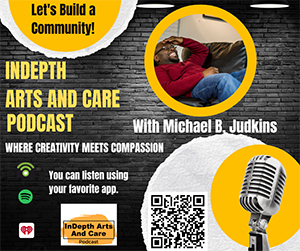By Capital Blue Cross – THINK (Trusted Health Information, News, and Knowledge) is a community publication of Capital Blue Cross. Our mission is to provide education, resources, and news on the latest health and insurance issues.
Heart disease is the leading killer of women in the U.S., but education and awareness about risk factors, symptoms, and healthy lifestyle changes can prevent tragedy for some.
Diane Schmidt never saw it coming, but then again, most seemingly healthy, petite, fit, 46-year-old women do not spend much time thinking about heart disease.
That all changed in the early morning hours of Feb. 24, 2015, when Schmidt awoke nauseous, sweating, and with severe pain in her shoulders and jaw, telltale symptoms of the leading killer of women in the U.S.
By sharing her story, Schmidt hopes to raise awareness about heart health and ways to prevent cardiac and stroke events, a mission shared by Capital Blue Cross through the work of its Health Promotion and Wellness team, and by educators at its five Capital Blue Cross health and wellness centers.
“Heart disease can hit anyone and any body type,” Schmidt said.
Cardiovascular disease is the leading cause of death for all adults, but minority groups are disproportionately affected, according to the Cleveland Clinic.
For example, Black women are more likely to have and to die from a heart attack than white women, and 47% of Black adults have been diagnosed with cardiovascular disease compared to 36% of white adults.
Social factors – social determinants of health – such as money and resources for basic needs, education, and access to quality healthcare, are a major factor in these disparities, say experts from the Cleveland Clinic.
With a clean bill of health from her last checkup, Schmidt said a heart attack was the last thing on her mind on that fateful February morning in 2015. It had to be something else, she said, but a glimpse in the mirror shocked her into reality.
“I saw death,” she said. “It was just that intense. I was white as a ghost. That’s when I started looking up symptoms of a heart attack – shoulder and jaw pain, nausea, sweating – and realized I had all of those.”
She dialed 911, an ambulance whisked her away, and by day’s end doctors had surgically inserted a wire mesh tube or stent to prop open a clogged artery and restore blood flow.
Only in retrospect did Schmidt connect the dots about the warning signs.
“I was tired a lot,” she said. The restaurant where she tended bar was up for sale. “There was some stress in my life.”
According to the Journal of the American Medical Association, chronic stress including family difficulties, job stress, loneliness, and other such triggers have a negative impact on the heart.
“People can misread heart attack signs and symptoms or convince themselves that they are too healthy to be having a heart attack,” said Dr. Jeremy Wigginton, Chief Medical Officer at Capital Blue Cross. “But it is a myth to think that heart attacks are just a problem for men, the aged, or the unfit.”
The American Heart Association published this list of common heart attack symptoms:
Symptoms in Women:
- Chest pain, but not always.
- Pain or pressure in the lower chest or upper abdomen.
- Jaw, neck, or upper back pain.
- Nausea or vomiting.
- Shortness of breath.
- Fainting.
- Indigestion.
- Extreme fatigue.
Symptoms in Men:
- Squeezing chest pressure or pain.
- Jaw, neck, or back pain.
- Nausea or vomiting.
- Shortness of breath.
“Knowing heart attack signs and symptoms can prevent death and minimize damage to your heart,” Dr. Wigginton said. “It’s important to talk to your regular healthcare provider about new symptoms or feelings, even if you don’t ‘think’ something is wrong.”
Awareness of heart attack risks and prevention are important, and monitoring blood pressure, body mass index (BMI), cholesterol, and blood sugar is crucial, especially for older women.
Capital Blue Cross health and wellness centers offer members free biometric screenings, which provide results for all those indicators. They also offer fitness and nutritional coaching, fitness classes, and more.
“You cannot control risks stemming from family history, age, and gender,” Dr. Wigginton said, “but you can control how much you exercise, how you manage stress, how much you sleep, whether you smoke, and what you eat.”
Schmidt, who is kickstarting a real estate sales career and operating a house cleaning business, has taken much of the advice to heart. She enjoys hiking, discovered yoga, and makes healthier food choices.
“I eat more vegetables,” she said, “and bacon is no longer my best friend.”
You can find more useful articles at https://thinkcapitalbluecross.com/
Information provided to TVL by:
JERRY REIMENSCHNEIDER
Senior Public Relations Specialist | Brand & Market Strategy
https://www.capbluecross.com/





